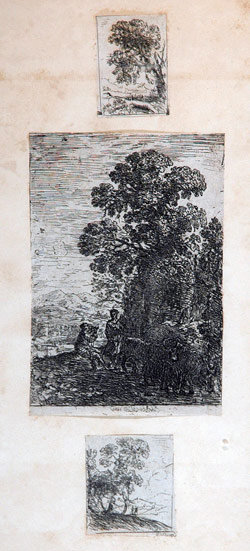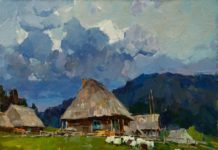This Florida artist gets inspiration for his plein air paintings from engravings in his collection.
“To me the etchings have a real, direct link to plein air painting,” says Keith Gunderson. “I like to put up imagery that inspires us and challenges us to new ways of seeing things. What I put on the walls are less like trophies and more like research.”
The first piece Gunderson chose to discuss was an etching by Claude Lorrain. “It’s about composition, and how Claude approached trees,” Gunderson says. “There’s a whole philosophy about how to paint trees. In one of his letters Claude talks about how he could tell how good an artist was by looking at how he handles the edges of trees. I found that to be a little gem of information.” Gunderson explains that he sees Claude’s trees as fractal elements, in a repeated, clover shape “that infinitely regresses as you dolly back into space.” He finds that this concept allows him to invent convincing trees from memory.
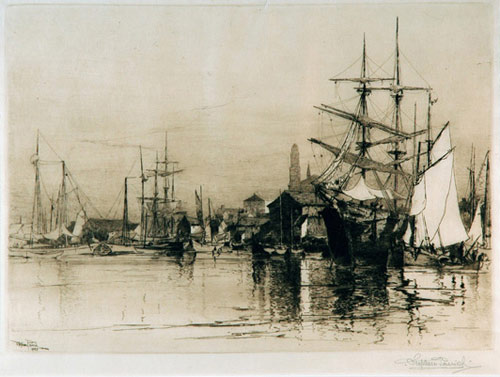
Stephen Parrish etching, 14 x 17 in.
The next etching is by Stephen Parrish, the father of Maxwell Parrish. “This is an amazing composition that has all the elements of a great plein air painting,” says Gunderson. “There’s sea and sky, and the repoussoir of dark boats in foreground, and it has reflections. It’s all there in this little etching.”
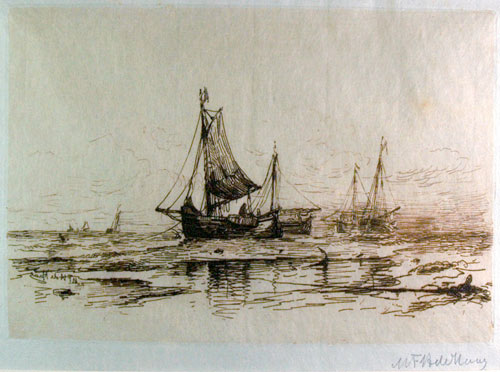
Maurits Frederik Hendrik de Haas etching, 8 x 10 in.
The last piece is an etching by Maurits Frederik Hendrik de Haas. “The de Haas is more simplified,” he says. “Parrish is giving you all the sails. De Haas is showing the power that you get from simplification.”
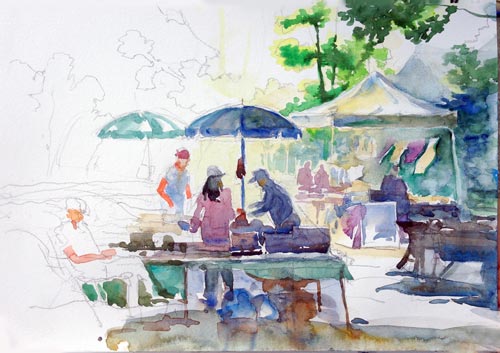
“High Falls Flea Market,” by Keith Gunderson, watercolor
Gunderson says, “I’ve been doing a lot of encaustic paintings, which are studio, obviously, but I work from memory or from paintings that I’ve done outside. It’s interesting textural effects and layering that I consider more important when I do plein air work. I’m not looking for that slick, polished look anymore. Now I am more trying to get interesting color, interesting spontaneity, interesting juxtaposition of texture. It’s not the mimicry of what you see. After a while, anyone can do that. The more I painted outside, the more I realized that mimicry is nonsense. That is hand-eye coordination. Eventually it becomes more philosophical.”

